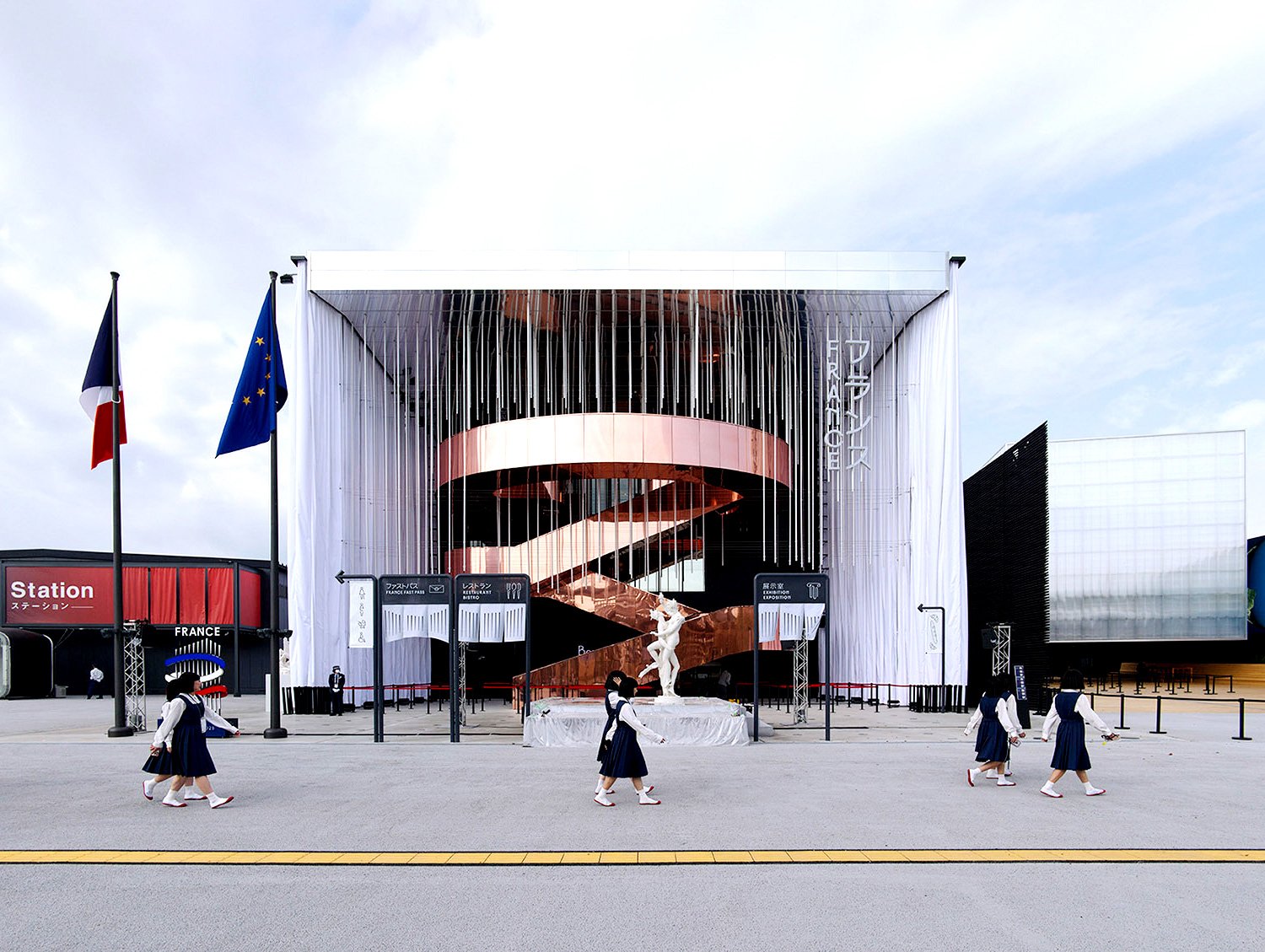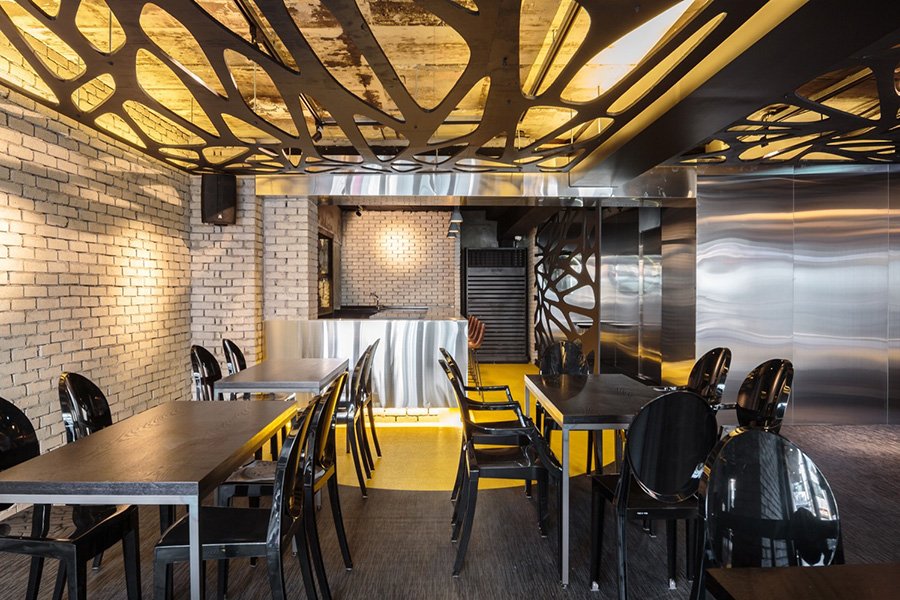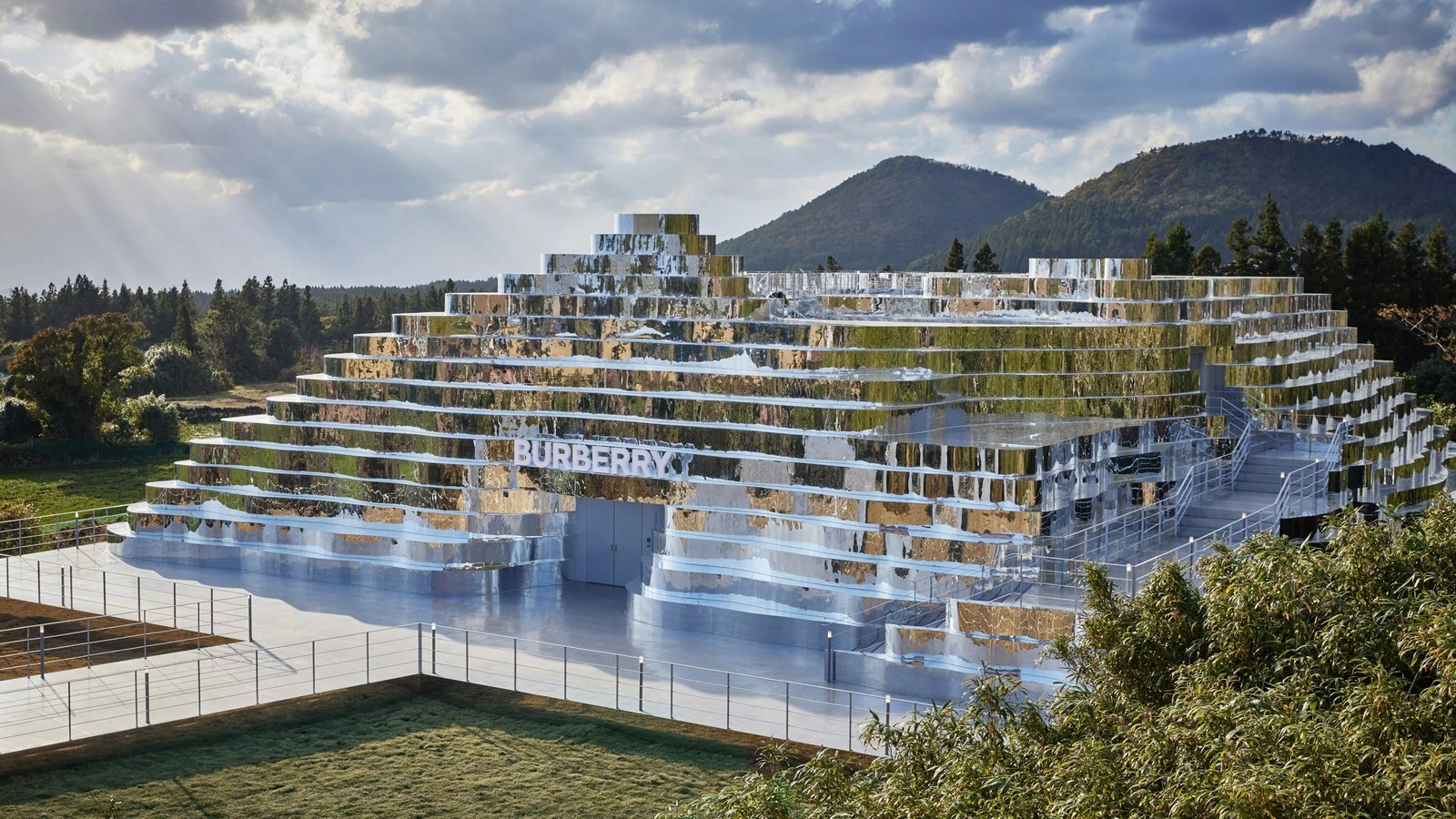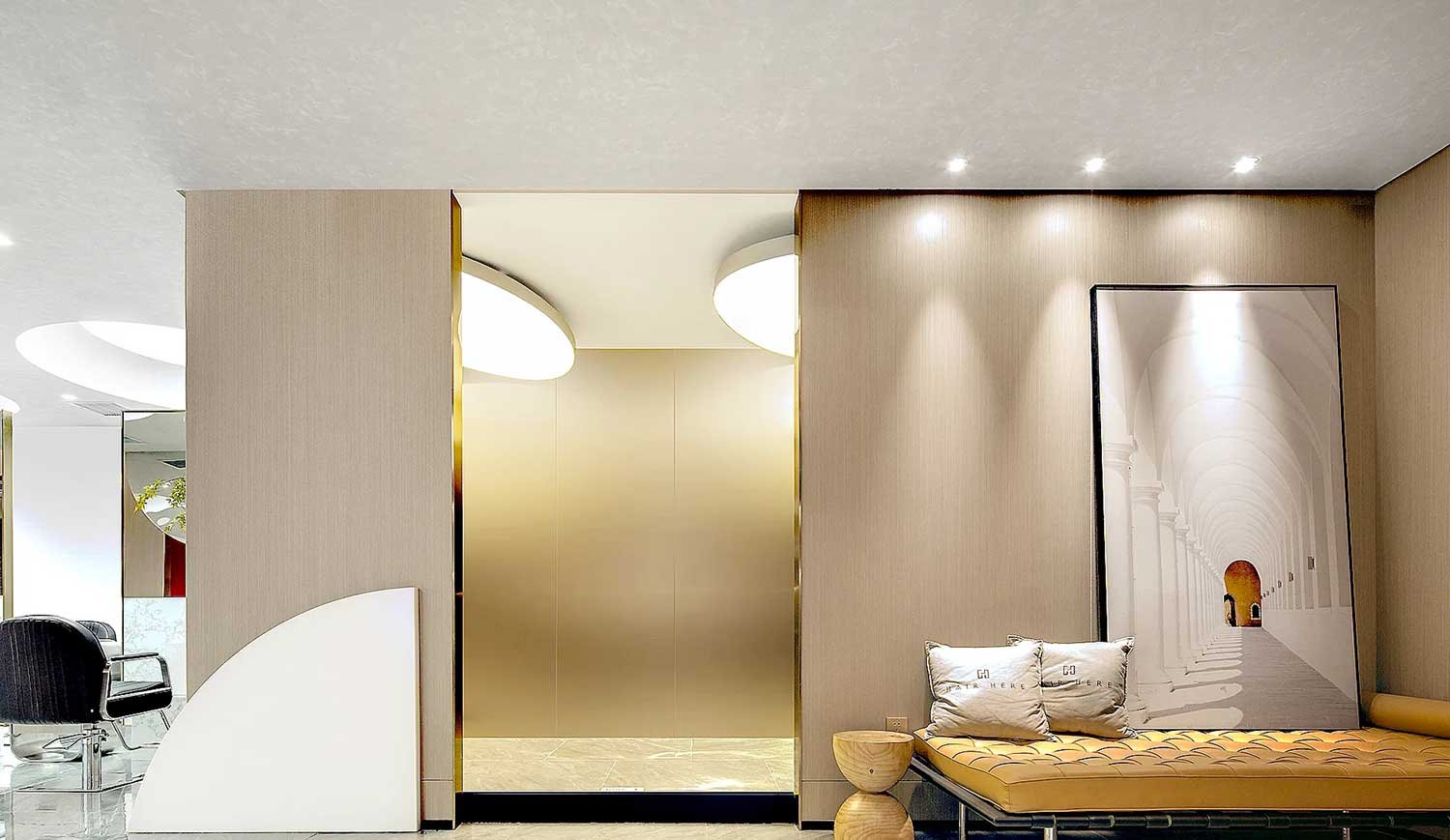The Evolution of Stainless Steel in Art and Design
Table of Contents
Stainless steel’s journey from its origins in industrial laboratories and slaughterhouses to the skylines of cities around the globe and the galleries of contemporary art has been one of the most dramatic material “transformations” of the 20th century. Its story is not a mere technical narrative about metallurgy and manufacturing processes, but a history of how aesthetics, function, socio-culture and human creativity have shaped each other.
This essay will follow the trajectory of stainless steel from utility to art, and tell how it has transformed our imagination of materials, space and beauty. We will explore its birth at the dawn of industry, the revolutionary impact of sculptural art, its penetration and innovation in the field of design, the creative freedom afforded by technological processing, and even its future pivotal role in sustainable design.

The Birth of the Industrial Age and Practical Aesthetics
In the early 20th century, stainless steel emerged in response to the most immediate needs of modern industrial society: hygiene, safety and durability. The earliest researchers who discovered the superior anti-rust properties of stainless steel did not think they were in the service of art, but rather wanted to solve the recurring problems of rust and bacterial contamination in medical and food processing environments.
In hospitals and abattoirs, clean metal surfaces represent “sterility” and the triumph of modern science over nature and disease. People want materials that can be cleaned easily and are not susceptible to bacterial growth, and stainless steel offers just that, an almost “cold” guarantee. The chromium in its alloying formula creates a passivated film on the surface, providing excellent resistance to corrosion and making it ideal for operating tables, cutlery, sinks and pharmaceutical equipment.
However, even within this functionalist context, stainless steel has inadvertently demonstrated its aesthetic potential. Its silver-white sheen is cool, yet uniform, simple and unadorned; its surface can be polished to a mirror or satin finish, revealing a pure reflection of light; its texture is hard yet malleable, and it can be mass-produced into standardized forms through industrial means. This “cleanliness” and “simplicity” later became an important feature of minimalist aesthetics.
In the function-first industrial society, the beauty of stainless steel is implied. It does not need to be carved, nor does it need to be painted, through its own performance and material qualities to declare a rational order and the power of science and technology. And it is this extreme rational pragmatism that provides the inspiration for later designers and artists to reinterpret.
The Stainless Steel Revolution in the Art of Sculpture
If the industrial age laid the foundation for the practical and aesthetic potential of stainless steel, then the sculptural arts of the mid to late 20th century really unleashed its expressive power. Sculptors looked to stainless steel for its strength, plasticity, reflective properties, and the dramatic effects it could produce in public space.
From Function to Language
In the eyes of sculpture artists, stainless steel is no longer a cold industrial product, but a language: it can reflect the world, distort space, refract light and shadow, and even challenge the viewer’s perception of reality. Although Richard Serra’s steel sculptures are mostly known for their weather-resistant steel, his concept has also profoundly influenced stainless steel artists – that is, using the weight and scale of the metal to force viewers to physically interact with the work. The large-scale stainless steel components are not only the sculpture itself, but also become part of shaping the space.
Reflection and Engagement
One of the great characteristics of stainless steel sculpture is its specular reflection. Anish Kapoor’s Cloud Gate (commonly known as ‘Bean’) is a masterpiece of this feature. Located in Chicago’s Millennium Park, the monumental work consists of highly mirror polished stainless steel panels with a seamless, liquid-metal surface that perfectly maps the surrounding skyline, buildings, and pedestrians. The viewer not only ‘sees’ the sculpture, but also ‘appears’ in it, creating a participatory, ever-changing experience.
Globalized City Signs
With the rise of urban public art, stainless steel modern sculpture has become part of a globalized aesthetic. From the mirrored installations in Beijing’s Olympic Park to the abstract metal works around the Guggenheim Museum in Bilbao, stainless steel has become an “international language” of 21st century urban culture. The metal’s modernity and cool texture can symbolize technological advancement as well as bring a sense of futurity and openness to a space.
The acceptance and innovation of stainless steel in the field of sculpture set an example for other areas of design – proving that industrial materials can be a true artistic medium.

Stainless Steel Penetration & Innovation in the Field of Design
Stainless steel’s breakthrough in the field of sculpture has further promoted its application in architecture, interior and furniture design at all levels. From function to form, this material has influenced the whole design history with its “cold, clean and modern” characteristics.
Modernist Totem in Architecture
The modernist architects of the mid-20th century appreciated the “honesty” of stainless steel. Ludwig Mies van der Rohe (Mies van der Rohe) advocates “less is more”, respect for the expressive power of the material itself, stainless steel in his skyscraper façade and interior components are common. It maintains clear geometric lines, reflects light, reduces visual weight, and gives the building a light and airy appearance.
In contemporary skyscraper façade systems, stainless steel is not only a decorative element, but also part of the structural material. Its resistance to corrosion, ease of cleaning and durability make it an ideal urban material. And the diversity of polished or brushed finishes offers a rich design language that can be both minimalist and luxurious.
Interior Design and Furniture Revolution
In the world of interior design, stainless steel symbolizes professionalism, precision and modernity. Kitchen worktops, range hoods, and cabinet fronts are made of stainless steel for durability and ease of cleaning, as well as for the aesthetics of “industrial style” and “minimalism”.
Furniture design is also deeply affected by it. 20 century, Charles and Ray Eames (Charles and Ray Eames), Marcel Breuer (Marcel Breuer) and other modernist masters of metal tubes and plates introduced into the chair, table, lamp design, the formation of cool, simple, ergonomic style. Stainless steel offers a more upscale and durable alternative to this metallic aesthetic.
Contemporary designers continue to explore as well: modular furniture systems, folding structures, recyclable materials – all of these innovative directions can be found in stainless steel. Its moldability, structural strength and modernity create countless design possibilities.
Technology and Craftsmanship:
The Alchemy of Sculptors and Designers
Stainless steel’s ability to achieve such a wealth of expressive power in art and design cannot be separated from the ever-advancing manufacturing processes behind it. From the early casting, forging, to modern laser cutting, CNC bending, seamless welding, mirror polishing, the material’s “language” in the technology to promote more and more diverse.
Main Processing Techniques
Cutting: Modern laser cutting machines can be accurate to the micron level, allowing designers to realize complex patterns and shapes.
Welding: TIG welding, laser welding and other technologies ensure smooth, strong seams, and even “seamless stitching” that is virtually invisible to the naked eye.
Polishing and surface treatment: Mirror polishing, brushing, sandblasting, electroplating (e.g. PVD coating), etc., bring diverse visual and tactile effects to the design.
These processes are not only technical work, but also an aesthetic practice. Craftsmen who polish pursue flawless reflections, and master welders need to control the flow of metal at extremely high temperatures to achieve elegant structures. Designers and craftsmen are like modern-day alchemists in this process, “refining” cold, hard metal into delicate, vital forms.
Dialogue Between Art and Craft
Many contemporary sculptors and designers emphasize collaboration with craftsmen. Anish Kapoor’s monumental installations, for example, require an extremely high level of metal forming and seamless welding. Their work is the result of the interplay of concept and technique, design and craftsmanship.
It is at this level that stainless steel embodies the relationship between “design” and “manufacture”, which is no longer a simple division of labor, but rather an intertwining and co-creative relationship.

Sustainability: A Material Promise for the Future of Design
At the beginning of the 21st century, the field of design is facing unprecedented environmental pressures and an ethical responsibility to be sustainable. Stainless steel has not only not been eliminated in this change, but has become even more important because of its unique environmental advantages.
Durability and Life Cycle
Stainless steel’s resistance to corrosion makes it extremely long-lasting in architecture and interior design. This means fewer repairs, fewer replacements and, from a Life Cycle Assessment (LCA) point of view, a significant reduction in the long-term environmental burden. In many sustainable building designs, stainless steel is viewed as a ‘future heritage’ material – something that will stand the test of time, not a fast moving product.
Recyclability and Reuse
Stainless steel is 100% recyclable. End-of-life stainless steel products can be re-melted to create new materials with little or no loss of performance. This closed-loop cycle fits perfectly into today’s “circular economy”.
Some architects and designers are taking it a step further and actively using recycled stainless steel sheets, profiles and even old machine parts to create new artwork or furniture, giving the material a new story and cultural significance.
Design and Ecological Perception
With the popularity of sustainable design, more designers are prioritizing materials that reduce energy consumption and carbon footprint in their projects. Stainless steel improves natural lighting and reduces lighting energy consumption due to its reflective properties; its durability reduces resource waste. The design philosophy of the future is not to shun industrial materials, but to use them more intelligently and responsibly.
Historical Evolution and Contemporary Diversity
Looking back over nearly a century of design history, the role of stainless steel in aesthetics has undergone many transformations. From the coolness of minimalism to the postmodern irony and deconstruction, from the mirror spectacle in sculpture to the industrial trend of interior design, stainless steel has proved itself to be a real “chameleon” material.
Mid-20th century: modernism is in full swing, and stainless steel is seen as a representative of functionalism and minimalism.
Post-modern period: designers used it to create tension, ironize the “cold industrial beauty” and challenge the audience’s expectations with exaggerated and humorous forms.
Contemporary diversity: sustainable design, technological aesthetics, cultural mix and match in the context of globalization …… Stainless steel can be luxurious, simple, retro, futuristic.
Today’s designers no longer see stainless steel as synonymous with a single style, but rather as an open toolbox – one that can be used to create very different effects depending on the idea, emotion and context.
Conclusion
The history of the art and design of stainless steel bears witness to the transformation of values in modern society. It has gone from the earliest hygienic needs and mechanical aesthetics to contemporary environmental protection, participatory experience, and cultural diversity, which is both a trajectory of technological development and an evolutionary history of humanistic care.
In the future, stainless steel will continue to play an irreplaceable role in urban renewal, art installations, sustainable architecture, and customized furniture. Its story reminds us that materials are never just cold substances, but mirrors of our civilization, reflecting our dreams, contradictions, responsibilities and hopes.
You Might Also Like
Please Share This
Recent Posts
- Installation Considerations for Metal Decoration
- Decorative Stainless Steel Solutions for Hospitality Projects
- Stainless Steel Decorative Trim Installation Guide: Ensuring Precision, Durability, and Aesthetic Quality
- Quality Control Key Points in Large-Scale Metal Engineering Projects
- Installation Challenges and Solutions for Stainless Steel Hotel Decorations



